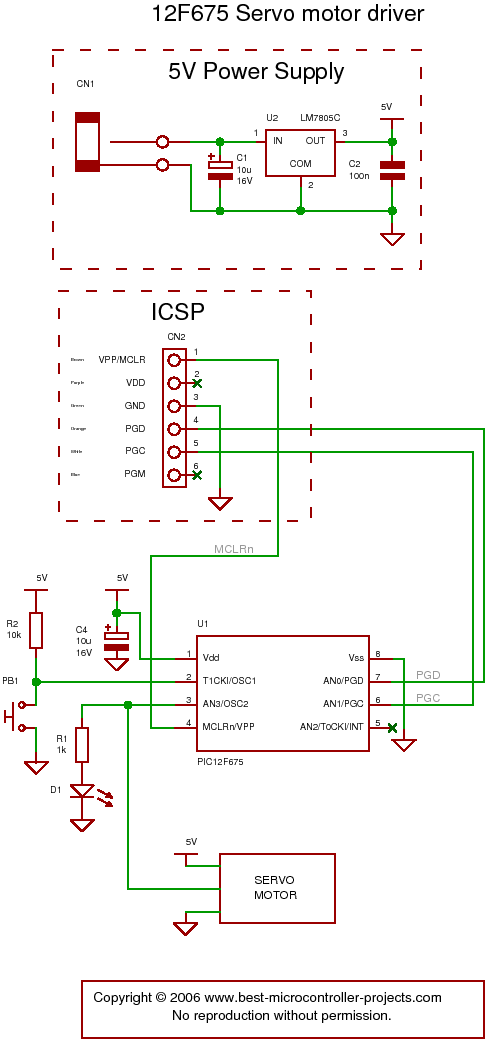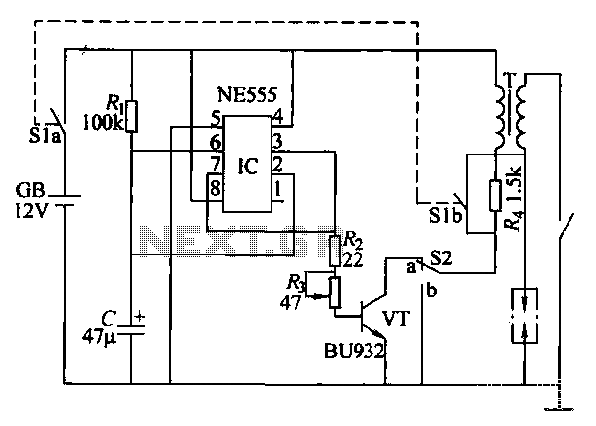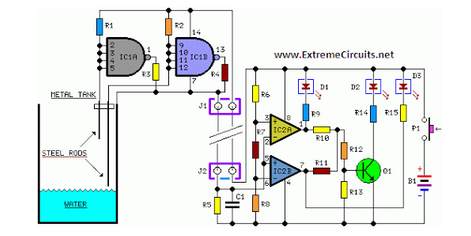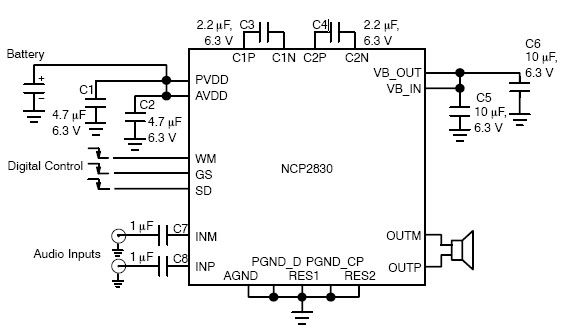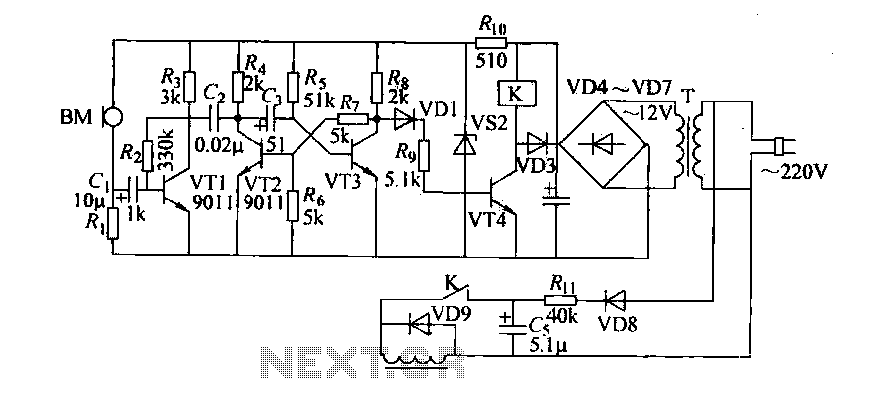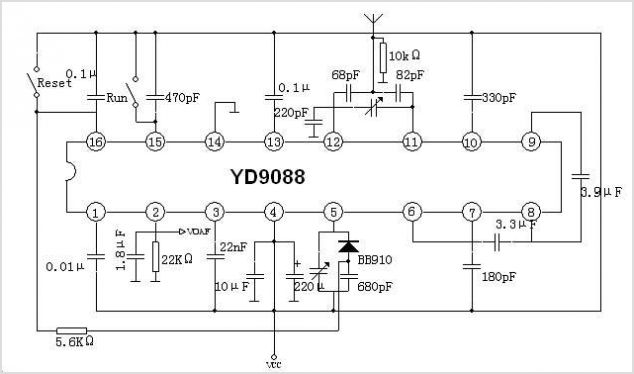
TDA7088T fm radio receiver circuit
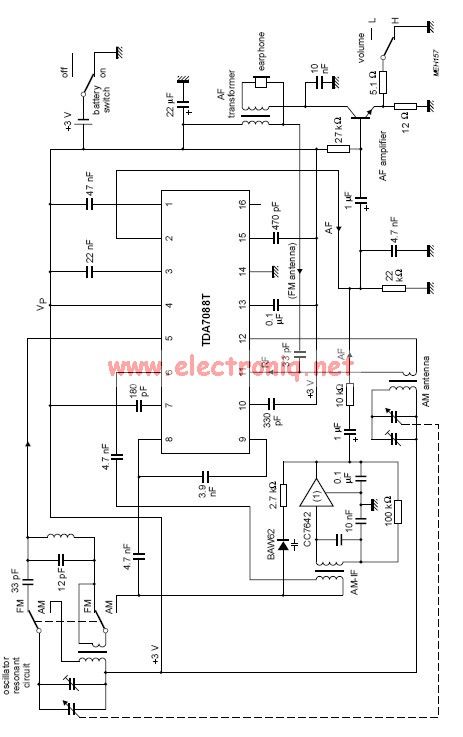
The TDA7088 incorporates a frequency-locked loop (FLL) system with an intermediate frequency (IF) of approximately 70 kHz. This circuit can be powered using a 3-volt battery cell or a regulated power supply.
The TDA7088 is designed for use in various applications, particularly in FM radio receivers. The frequency-locked loop (FLL) system is crucial as it enables the circuit to maintain a stable frequency output, which is essential for demodulating the incoming FM signals. The intermediate frequency of 70 kHz is a standard value that allows for effective filtering and amplification of the received signal.
To ensure proper operation, the TDA7088 requires a stable power supply. A 3-volt battery cell is a common power source, making the circuit suitable for portable applications. Alternatively, a regulated power supply can be utilized to provide a consistent voltage, enhancing the performance and reliability of the circuit.
The schematic of the TDA7088 typically includes several key components. These may consist of resistors and capacitors that form the necessary filters and gain stages for the FLL. The circuit may also include external components for tuning and adjusting the frequency response, allowing users to optimize performance based on specific requirements.
In summary, the TDA7088 is a versatile integrated circuit that effectively utilizes a frequency-locked loop system to achieve stable reception of FM signals, powered by either a 3-volt battery or a regulated power supply. Its design is suitable for a range of electronic applications, particularly in the field of radio communications.TDA7088 contains a frequency-locked-loop (FLL) system with an Intermediate Frequency (IF) of about 70 kHz. For supplying this circuit we can use an 3 volts battery cell or a regulated power supply. 🔗 External reference
The TDA7088 is designed for use in various applications, particularly in FM radio receivers. The frequency-locked loop (FLL) system is crucial as it enables the circuit to maintain a stable frequency output, which is essential for demodulating the incoming FM signals. The intermediate frequency of 70 kHz is a standard value that allows for effective filtering and amplification of the received signal.
To ensure proper operation, the TDA7088 requires a stable power supply. A 3-volt battery cell is a common power source, making the circuit suitable for portable applications. Alternatively, a regulated power supply can be utilized to provide a consistent voltage, enhancing the performance and reliability of the circuit.
The schematic of the TDA7088 typically includes several key components. These may consist of resistors and capacitors that form the necessary filters and gain stages for the FLL. The circuit may also include external components for tuning and adjusting the frequency response, allowing users to optimize performance based on specific requirements.
In summary, the TDA7088 is a versatile integrated circuit that effectively utilizes a frequency-locked loop system to achieve stable reception of FM signals, powered by either a 3-volt battery or a regulated power supply. Its design is suitable for a range of electronic applications, particularly in the field of radio communications.TDA7088 contains a frequency-locked-loop (FLL) system with an Intermediate Frequency (IF) of about 70 kHz. For supplying this circuit we can use an 3 volts battery cell or a regulated power supply. 🔗 External reference
